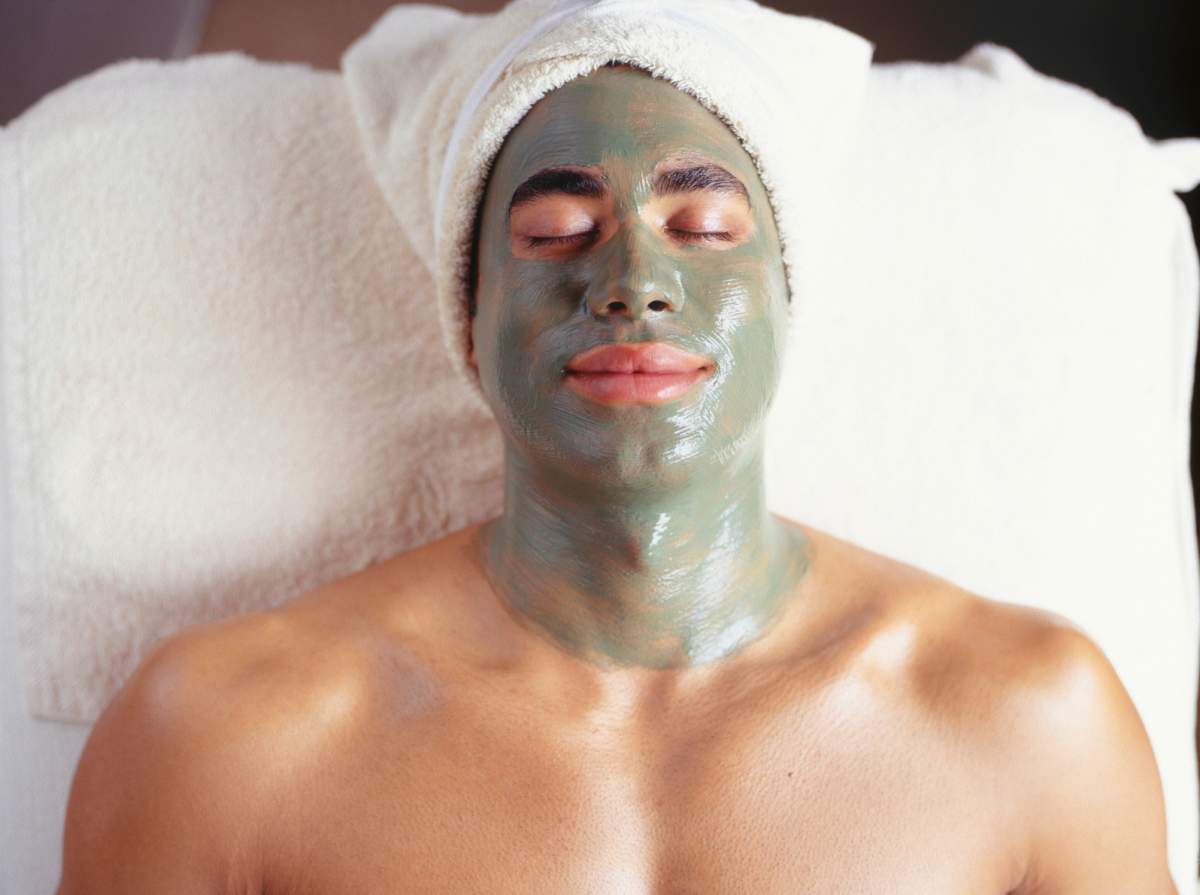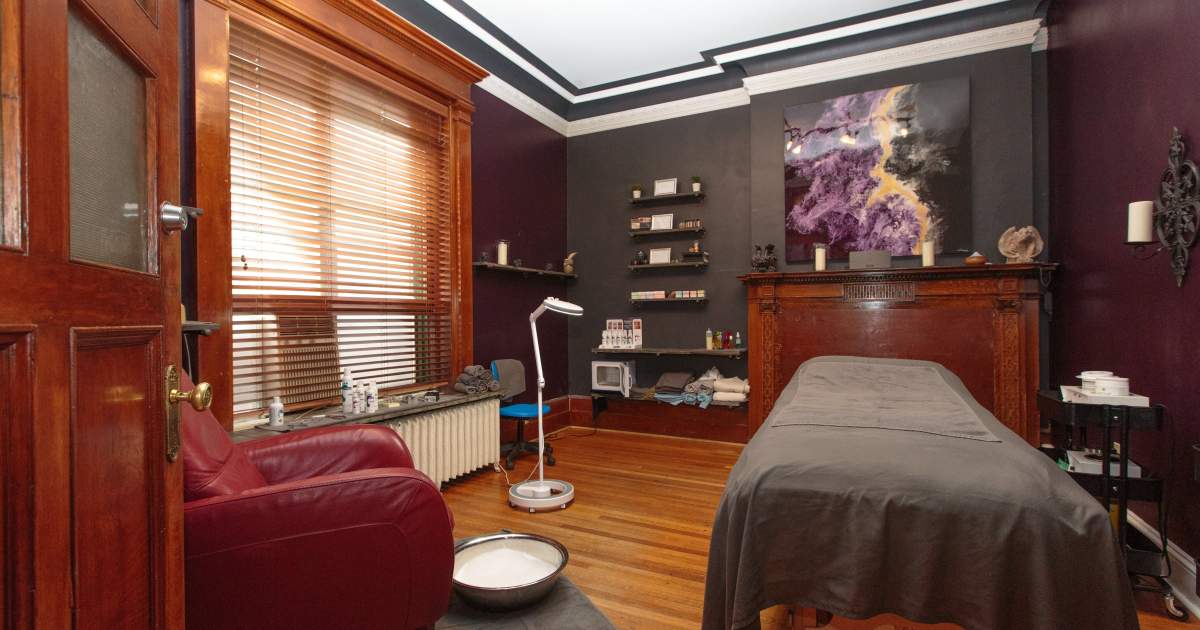In one Toronto spa catered to men, you will find everything from body shaving to back facials to eyebrow and lash tints.

Bodé Spa is one of Canada’s only men-only spas, and owner and CEO Aharon Trottier told Global News the demand for spaces like this has been around for years.
“The demand was always there,” he said. “The demand was increased in the 90s… the numbers kept showing male skincare products were growing rapidly (as well as) men attending spas.”
Trottier argued there was a lack of services and spaces that catered to men, but in the last few years, there has been a rise of both men-only spas and salons (outside barbershops) that offer services to men.
READ MORE: How to remove gel polish at home without damaging nails
According to a recent report from the International Spa Association (ISPA), 49 per cent of spa customers in the U.S. were men, an increase from 29 per cent in 2005.
The association’s board chairman Garrett Mersberger said the trend initially took off in 2017.
“(Men are) much more aware that it’s not just a thing I go to to get pampered. It’s an actual lifestyle choice with benefits to my body, to my wellness. It’s part of my routine now. It’s not just about going for relaxation,” he told the site.
“It used to always be a female-driven thing. We’re now seeing 50/50, if not swinging more toward the males.”
Changes in lifestyle
Kathryn Mereienior, the manager of marketing at Elwood Spa in Toronto, said the company has offered services for men since 1982. “We, in fact, shifted from co-ed days in our water therapies area to an entirely co-ed space in and around 1999.”

Get breaking National news
She told Global News in the last two decades, and even more so in the last few years, there is a shift of attitude when it comes to enjoying the benefits of a spa.
“We feel that everyone, regardless of gender identity, is realizing the benefits that spas have to offer in terms of health and wellness,” she explained.
READ MORE: Skin cancer can develop on hands and around nails
“We are connected all the time, whether it be work or social media, and we all need time to disconnect in order to live a healthy and happy lifestyle.”
She believes people in general also are more interested in taking care of their skin and have a better understanding of the effects of stress, sun and pollution.
“We live in a bustling city and there is even more of an impact from pollution and the fast-paced lifestyles we live,” she said.
“People are looking for more balance in their lives. We can see with the rising popularity in fitness and even meditation, that people are taking better care of themselves. In our establishment, although not a 50/50 split, male guest visits continue to grow year over year.”
Why the details matter
ISPA president Lynne McNees told AP more men going to spas means more spas need to change their facilities. This could impact treatment areas, relaxation areas and changing stations.
For Trottier, one of the reasons for working with a men-only spa also meant building a facility that could accommodate the different bodies of men. Privacy and physical space were things he noticed — clients at his spa often liked to sit on their own and avoided socializing.
This also meant for Trottier and his team to create sandals and robes, for example, that was larger in size than the industry standard or create tables that could support men up to 350 pounds.
READ MORE: Nail salon safety — What to watch for at your next manicure or pedicure
“It’s those kinds of things one may not think about but that helps them to find a space,” he said.
Hotels and spas are designing unisex bathrooms and locker rooms as well, Mersberger told AP. Women are usually fine with it, McNees added, because they no longer have to drag reluctant spouses to the spa.
“We’re seeing a lot of groups and parties and different special events in the spa with both men and women,” she told the site.
Education is also a factor.
“We as men don’t grow up with a lot of education on how to care for our skin, a lot of us don’t even learn how to shave from our dads,” he said, adding the spa also offers consultations that teach men the importance of taking care of their skin.”
Spas are still seen as a ‘feminine thing’
Manicures, pedicures or waxing are heavily marketed towards women, and Trottier argued even in the Canadian educational perspective, esthetician training is still focused on catering to women.
But there’s also an underlying notion that spas are a feminine thing, he added.
“Masculinity is very fragile and I say that partly with some humour but also with a lot of seriousness,” he said. “There is still the social stigma that self-care and spas are feminine spaces.”
He added if the experts aren’t out there who can wax men or treat men, it further adds to the stereotype that spas are not made for them. Trottier added there are very few men-only spas and even the places who offer services for men, often there are few professionals who can service men.
In Trottier’s experience, he has also heard experiences from customers who had “bad” experiences with some spas that cater to women. Some men talked about professionals at the spa not being able to perform the service or the few encounters of giggling or laughing when men were getting services done.
Sometimes, it’s comments about how hairy they are or even that women don’t feel safe around them.
Even with all this, Trottier knows spas will continue to be popular for men down the road.
“Definitions of masculinity have shifted… there’s definitely an increase in demand.”
— with files from The Associated Press










Comments